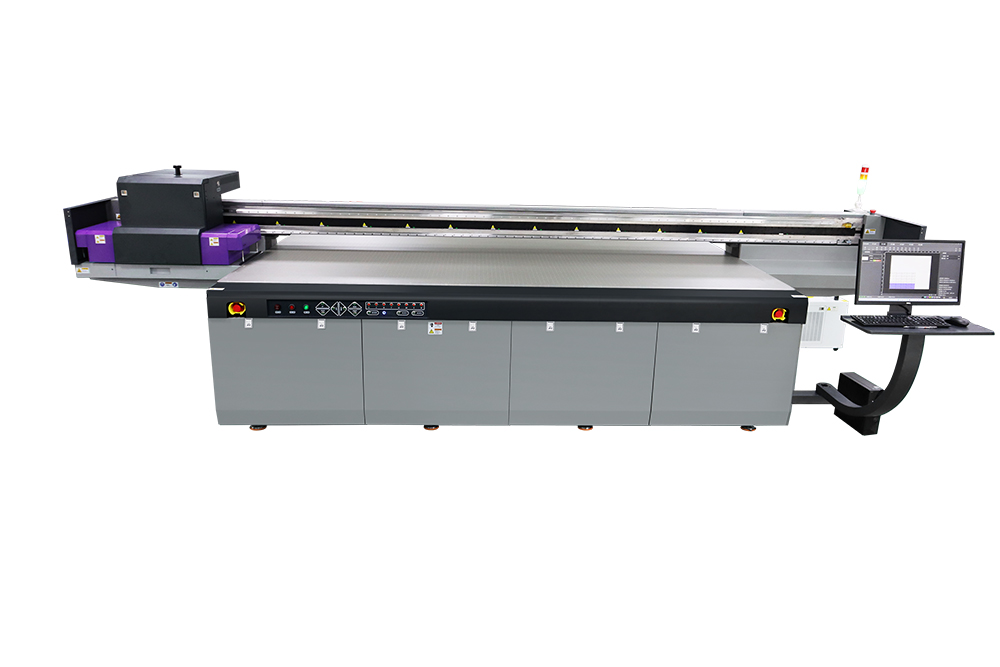UV Flatbed Printer: Understanding UV Curing Technology
UV Flatbed Printer: Understanding UV Curing Technology
In the realm of digital printing, UV flatbed printers have emerged as a game-changer, revolutionizing the way images and designs are transferred onto various substrates. These printers, equipped with UV curing technology, offer unparalleled advantages in terms of speed, durability, and versatility. This article delves into the intricacies of UV curing technology, its working principles, advantages, applications, and considerations when using UV flatbed printers.

UV Curing Technology: An Overview
UV curing, also known as UV coating or UV hardening, is a process that utilizes ultraviolet (UV) light to instantly cure or dry ink, coatings, and adhesives. This technology is employed in UV flatbed printers to固化 ink onto a wide array of materials, including plastics, glass, metal, wood, and more. The process involves exposing the ink to high-intensity UV light, which triggers a chemical reaction that transforms the ink from a liquid state to a solid state in a matter of seconds.
Working Principles of UV Curing
UV curing relies on the interaction between UV light and photoinitiators present in the ink. When UV light hits the ink surface, it activates the photoinitiators, causing them to form free radicals or ions. These reactive species then initiate a polymerization reaction, linking the ink’s monomers and oligomers into a cross-linked network. This chemical transformation results in the hardening and curing of the ink, creating a durable and smudge-resistant finish.
The UV curing process is highly efficient and environmentally friendly. It consumes less energy compared to traditional drying methods and emits no volatile organic compounds (VOCs), making it suitable for eco-conscious printing applications.
Components of a UV Flatbed Printer
A UV flatbed printer consists of several key components that enable precise and efficient printing and curing:
Print Bed: The flat, horizontal surface where the substrate is placed for printing. It is designed to accommodate various sizes and types of materials.
Inkjet Print Heads: These are the devices that deposit ink onto the substrate. They can move along the X and Y axes, allowing for precise control over the printing process.
UV Lamps: Located above or beside the print bed, these lamps emit high-intensity UV light to cure the ink instantly after it is deposited.
Control System: This includes software and hardware that manage the printer’s operations, such as ink deposition, UV lamp intensity, and printing speed.
Advantages of UV Flatbed Printers
Instant Curing: UV inks cure immediately upon exposure to UV light, enabling fast printing speeds and reducing the need for additional drying time.
Durability: The cured ink forms a strong bond with the substrate, resulting in prints that are resistant to fading, scratching, and chemicals.
Versatility: UV flatbed printers can print on a wide range of materials, including those that are heat-sensitive or difficult to print on with traditional methods.
Environmental Friendliness: UV curing is a clean process that emits no VOCs, making it an environmentally sustainable choice.
High Resolution: These printers can produce high-quality prints with sharp details and vibrant colors.
Applications of UV Flatbed Printers
UV flatbed printers find applications in various industries due to their versatility and efficiency:
Advertising and Signage: Printing high-quality graphics and signs for outdoor and indoor use.
Packaging: Creating custom packaging with unique designs and finishes.
Decorative Printing: Applying decorative patterns and images onto furniture, tiles, and other surfaces.
Industrial Manufacturing: Printing functional coatings, labels, and markings on industrial components.
Artistic and Craft Applications: Enabling artists and craftsmen to print their designs onto various materials for creative projects.
Considerations When Using UV Flatbed Printers
While UV flatbed printers offer numerous advantages, there are some considerations to keep in mind:
Initial Investment: UV flatbed printers can be more expensive than traditional printers due to their advanced technology.
Operator Training: Proper training is essential to ensure optimal printer performance and to avoid misprints or ink curing issues.
Safety Precautions: UV light can be harmful to the skin and eyes. Operators should wear protective gear and work in well-ventilated areas.
Ink and Substrate Compatibility: Different inks may be required for specific substrates to ensure proper curing and adhesion.
Maintenance: Regular maintenance, including cleaning the print heads and replacing UV lamps, is necessary to maintain print quality and printer longevity.
Conclusion
UV flatbed printers with UV curing technology have transformed the printing industry by offering unparalleled speed, durability, and versatility. Their ability to print on various materials and produce high-quality, instantly cured prints has made them indispensable in advertising, packaging, industrial manufacturing, and more. As technology continues to advance, UV flatbed printers will likely become even more efficient and accessible, further expanding their applications and solidifying their position as a cornerstone of modern printing technology.
